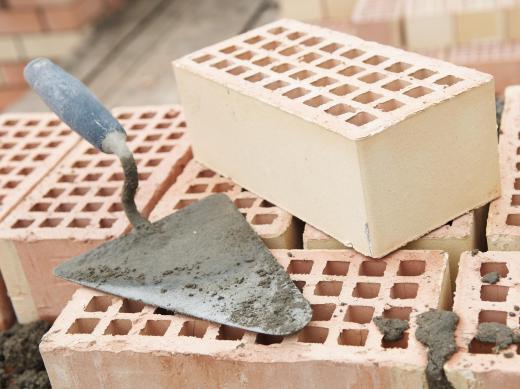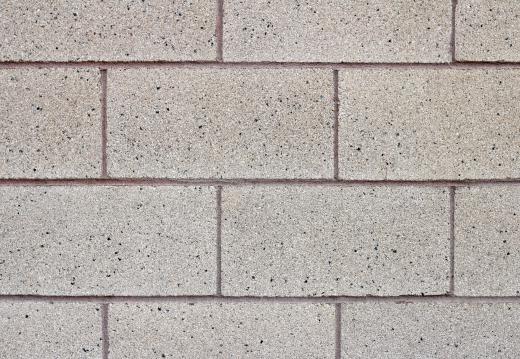Brick masonry is the process of constructing a building from individual bricks laid in a specific pattern and bound together, usually by mortar. Occasionally, the term is also used to refer to the brick units themselves. Masonry is considered a durable construction method, and brick is one of the most common types of masonry used in industrialized nations. The strength of a structure created with this method depends on the type and uniformity of the individual bricks selected, as well as the style of masonry used.
Bricks are made in a range of varieties, each intended for a specific purpose, but all are created from some combination of sand, water, clay, and heat. Building brick, or common brick, is used in construction and is often "cored" with two rows of holes to save material and reduce weight. Face brick is chosen for visible surfaces or exposed walls and comes in different colors, sizes, and shapes. Firebrick is made with special clay to offer additional heat resistance in fireplaces or boiler rooms. Glazed brick is coated on one surface with a ceramic finish that is sanitary and easy to clean, making it popular in hospitals and laboratories.

Brick masonry can support substantial weight, but does not respond well to shaking, twisting, or stretching. For this reason, some kind of structural reinforcement, like steel beams, is usually included, along with rigid insulation boards or fiberglass batts. The most popular type of masonry is the veneer wall, in which bricks are used to line the surface of a structure made from another material to make it look like it's made of brick. Solid brickwork is also popular and features two or more layers of bricks that are bound together in a specific pattern to form a masonry bond that may be secured with mortar. Other types include the crinkle-crankle wall, shaped like a serpentine to resist toppling, and the brick masonry arch, prized for its compressive strength.

Many attributes make brick a practical and popular construction choice. In addition to the inherent beauty of brickwork, it is also thought to create the impression of solidity and permanence, so brick homes often sell for higher prices. Brick is almost maintenance-free, never needs to be painted or stained, and resists damage from wind, fire, and water. It also offers both noise and thermal insulation, so structures created from it generally stay cooler in the summer and warmer in the winter.
